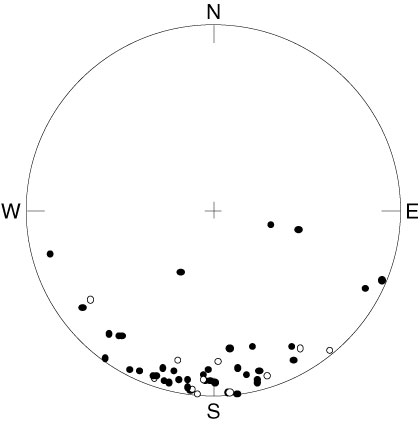
Figure F4. Comparison for hook-type magnetic behaviors of relative orientation of characteristic remanent magnetization (least-squares fit to higher temperature steps) to the low-temperature component (assigned as "North-oriented," declination 0°). We assumed that the low-temperature component is dominated by a secondary overprint of present-day field and that hook-type extreme shifts in declination upon demagnetization represented the removal of this normal polarity overprint from a characteristic reversed polarity magnetization. The clustering of higher-temperature directions toward south-directed declinations supports this interpretation. Therefore, even though it was not always possible to adequately resolve the orientation of the low-temperature vector in samples displaying similar hook-type demagnetization paths (e.g., Fig.
F2E), it is probable that these also are reversed polarity characteristic directions with a superimposed normal polarity secondary vector.



![]()